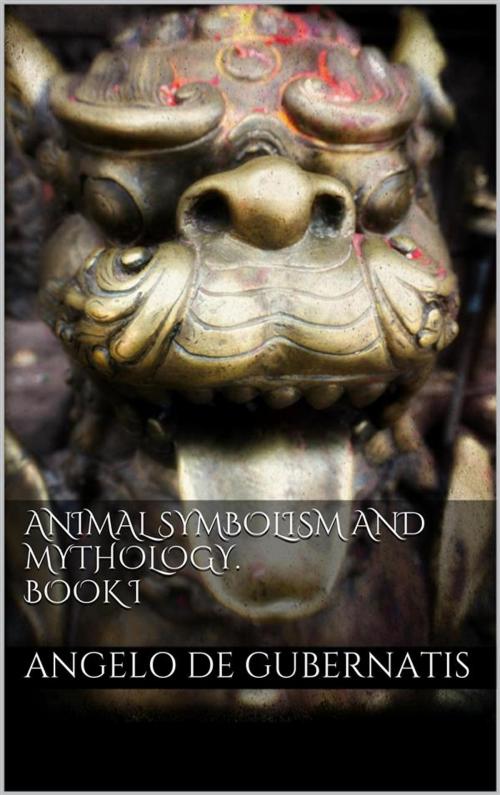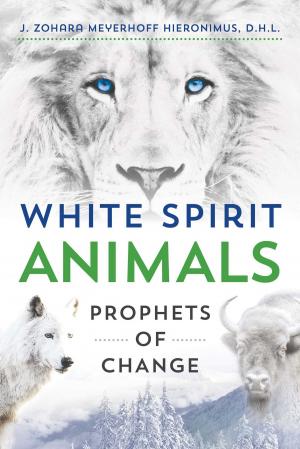Animal symbolism and mythology. Book I
Nonfiction, Religion & Spirituality, New Age, Mysticism, Philosophy, Mind & Body| Author: | Angelo De Gubernatis | ISBN: | 9786051764245 |
| Publisher: | Angelo De Gubernatis | Publication: | June 26, 2015 |
| Imprint: | Language: | English |
| Author: | Angelo De Gubernatis |
| ISBN: | 9786051764245 |
| Publisher: | Angelo De Gubernatis |
| Publication: | June 26, 2015 |
| Imprint: | |
| Language: | English |
We are on the vast table-land of Central Asia; gigantic mountains send forth on every side their thousand rivers; immense pasture-lands and forests cover it; migratory tribes of pastoral nations traverse it; the gopatis, the shepherd or lord of the cows, is the king; the gopatis who has most herds is the most powerful. The story begins with a graceful pastoral idyll.
To increase the number of the cows, to render them fruitful in milk and prolific in calves, to have them well looked after, is the dream, the ideal of the ancient Aryan. The bull, the fœcundator, is the type of every male perfection, and the symbol of regal strength.
Hence, it is only natural that the two most prominent animal figures in the mythical heaven should be the cow and the bull.
The cow is the ready, loving, faithful, fruitful Providence of the shepherd.
The worst enemy of the Aryan, therefore, is he who carries off the cow; the best, the most illustrious, of his friends, he who is able to recover it from the hands of the robber.
The same idea is hence transferred to heaven; in heaven there is a beneficent, fruitful power, which is called the cow, and a beneficent fœcundator of this same power, which is called the bull.
The dewy moon, the dewy aurora, the watery cloud, the entire vault of heaven, that giver of the quickening and benignant rain, that benefactress of mankind,—are each, with special predilection, represented as the beneficent cow of abundance. The lord of this multiform cow of heaven, he who makes it pregnant and fruitful and milk-yielding, the spring or morning sun, the rain-giving sun (or moon) is often represented as a bull...
We are on the vast table-land of Central Asia; gigantic mountains send forth on every side their thousand rivers; immense pasture-lands and forests cover it; migratory tribes of pastoral nations traverse it; the gopatis, the shepherd or lord of the cows, is the king; the gopatis who has most herds is the most powerful. The story begins with a graceful pastoral idyll.
To increase the number of the cows, to render them fruitful in milk and prolific in calves, to have them well looked after, is the dream, the ideal of the ancient Aryan. The bull, the fœcundator, is the type of every male perfection, and the symbol of regal strength.
Hence, it is only natural that the two most prominent animal figures in the mythical heaven should be the cow and the bull.
The cow is the ready, loving, faithful, fruitful Providence of the shepherd.
The worst enemy of the Aryan, therefore, is he who carries off the cow; the best, the most illustrious, of his friends, he who is able to recover it from the hands of the robber.
The same idea is hence transferred to heaven; in heaven there is a beneficent, fruitful power, which is called the cow, and a beneficent fœcundator of this same power, which is called the bull.
The dewy moon, the dewy aurora, the watery cloud, the entire vault of heaven, that giver of the quickening and benignant rain, that benefactress of mankind,—are each, with special predilection, represented as the beneficent cow of abundance. The lord of this multiform cow of heaven, he who makes it pregnant and fruitful and milk-yielding, the spring or morning sun, the rain-giving sun (or moon) is often represented as a bull...















